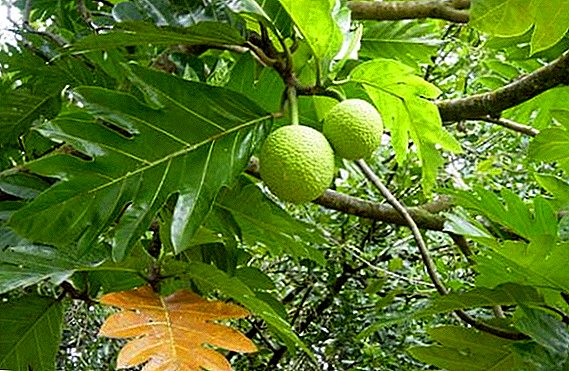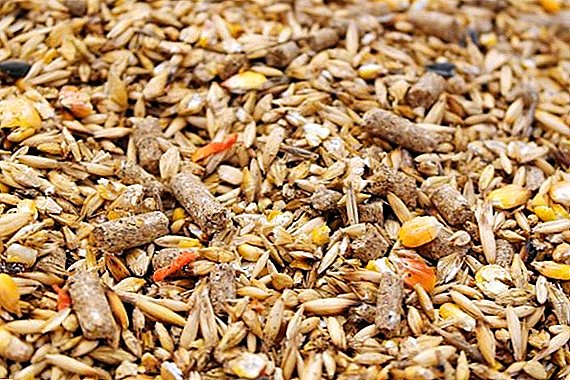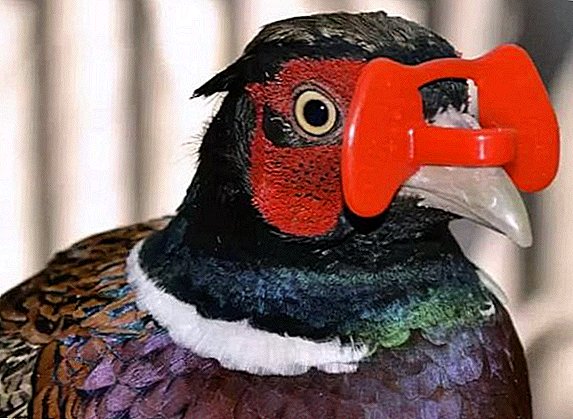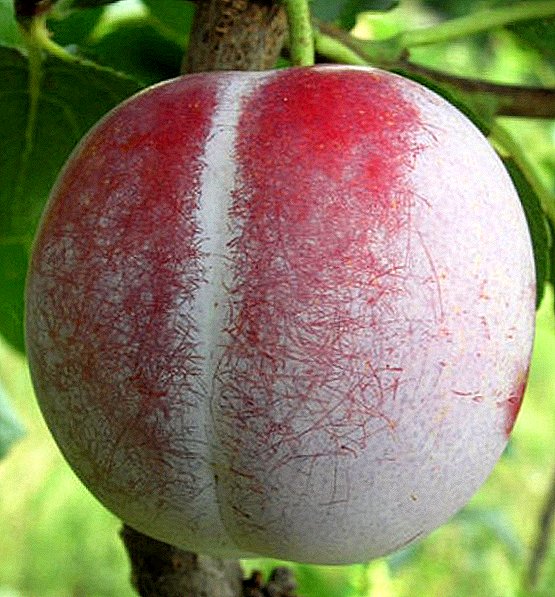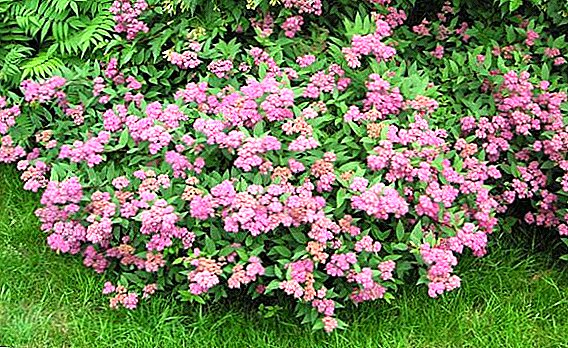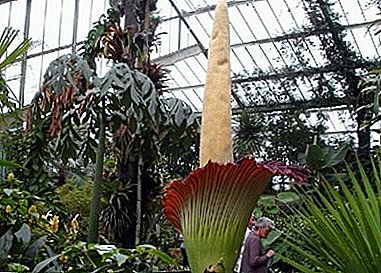
Amorphophallus is natural air purifier. When flowering the plant is not recommended to keep indoors. The plant propagates by dividing the tubers.
In winter, the flower can lose leaves. Top dressing is made from the middle of spring at the end of summer.
Further in the article we will talk about the plant amorphophallus: photo, home care, beneficial properties and diseases.
Care after purchase
 After buying a flower can get used to the atmosphere at home for a long time. Transferring plants to a different climate is fraught with a stressful situation.
After buying a flower can get used to the atmosphere at home for a long time. Transferring plants to a different climate is fraught with a stressful situation.
After purchasing the plant should be put in well-lit room without direct sunlight.
At home, karphophallus grows well in partial shade near the balcony or the windows. May tolerate the northern side.
Watering should be regular and plentiful. The plant does not tolerate excessive water flooding. For such flowers, a special drainage system is made from pebbles or composite. Permanent overflows lead to acidification of the earth and root decay. Recommended planting a flower directly into the soil.
Simultaneous transplantation with the formation of a plant crown is prohibited. This procedure significantly weakens the plant, slowing its growth.
Bloom
Smell Amorphophallus is very strong. Allergic reactions may occur in some people. Therefore, when flowering plant is not recommended to keep indoors.
The smell of a flower attracts various insects that fly to pollinate it. The aroma of amorphophallus is very sharp, unpleasant. In some species it may resemble the smell of rotten fish, meat or garbage.
Planting and transplanting
Capacities need to choose light and wide. Flower shops sell ready-made pots that you can buy or make yourself. Perfectly fit ice cream cups. Plastic bottles that can be cut without a neck can be used.
At the bottom cups need to do slots for drainage. At the bottom of the tank is placed drainage, a layer of 2 centimeters. Vermiculite, expanded clay or ceramic shards are suitable. Plant drainage smoothes over-watering the plant and prevents the roots from rotting.
Landing and transplanting always carry out in the spring time. Young plants are fashionable to replant up to 4 times a year. Adult specimens are transplanted as the tank is filled with the root system. You can not touch the plant for 3-5 years.
Breeding
 Propagated Amorphophallus division of tubers. The procedure can be carried out in spring or autumn. They are treated with fungicides. A few days before breeding, the tubers are dug up and cut the stalks.
Propagated Amorphophallus division of tubers. The procedure can be carried out in spring or autumn. They are treated with fungicides. A few days before breeding, the tubers are dug up and cut the stalks.
This procedure will help the kidneys easier to identify. Tubers should be shortened to 15 centimeters. Miniature or coarse tubers are allowed not to divide.
Important, to keep the kidneys on two sides. Then the slices are cut and well dried. Delenki washed and inspected again. Tubers with brown spots should not be used. After that, they are treated with sulfur and fungicides.
The tips are dipped in the tool and hold for 15 minutes. Then the tubers are well dried. After that they are suitable for breeding.
Growing up
Amorphophallus refers to unpretentious plants. In winter, the flower can lose leaves. In the spring, it "comes to life" and is abundant in growth.
Peduncle may appear before the leaves. Some specimens in length can reach more than four to five meters.
Temperature
In winter temperature should be stable without drops. Due to the unstable temperature of the flower may appear brown spots, the leaves will fall off. The optimum temperature is 12 ° C.
In the summer time, the flower tolerates temperatures of 15-25 ° C. It is recommended to carry it out on the balcony, in the greenhouse or garden.
With a long stay in uncomfortable conditions for the bush, the plant may die.
Fertilizer
Fertilizing produce from the middle of spring to the end of summer. The procedure is carried out once every 3-4 days.
Purchased mineral fertilizers - micro, salt, nitrogen, phosphate, potash - are best suited.
The pet responds well with abundant flowering to nutrient fertilizers and fertilizing.
Can be used liquid fertilizersthat are diluted with water. Spray the flower from the sprayer with this mixture.
Lighting
Plant prefers bright ambient light. Loves when light hits all sides of a flower. Does not tolerate direct sun exposure.
Prefers bright rooms without direct sunlight. With a lack of light, the growth of the plant slows down dramatically, the stems are strongly drawn out, the leaves lose their color and begin to crumble.
Video about amorphophallus care (indoor plant from the tropics).
Benefit and harm
 Amorphophallus is a natural air purifier. It cleans the air of harmful toxins, destroys viruses, staphylococcus and harmful bacteria.
Amorphophallus is a natural air purifier. It cleans the air of harmful toxins, destroys viruses, staphylococcus and harmful bacteria.
Flower can eliminate benzenes, phenols and formaldehyde. He will easily cope with exhaust gases. Leaves suck in carbon monoxide.
Plant possesses antibacterial properties. It has a wonderful effect on people who suffer from diseases of the heart, biliary tract, intestinal spasms.
The leaves of the flower emit sedative and anti-stress substances into the air.
Diseases and pests
Amorphophallus can get root and gray rot.
Root rot affects the roots of the plant. They become brown or burgundy. The disease can not be seen immediately. Therefore, it is permissible to blacken the stems and leaves. To save the plant from this disease can only remove the infected root system. To prevent such a disease, you should not flood the plant and use a good drainage system.
Gray rot manifested in the form of mold. The fungus easily subsides when the plant is turned in the other direction. When the disease starts, the leaves darken and crumble. The cause of this disease is too high humidity and poor ventilation of the room.
Pests can occur mealybug. It manifests itself in the form of rough convolutions in the leaf sinuses. Usually, the nest of such a pest is located at the bottom of the leaf plate. Because of its fluffy cobweb, mealybug is called shaggy aphids. Plant pest when large accumulated dust and dirt. Therefore, the leaves of the plant must be kept clean.


